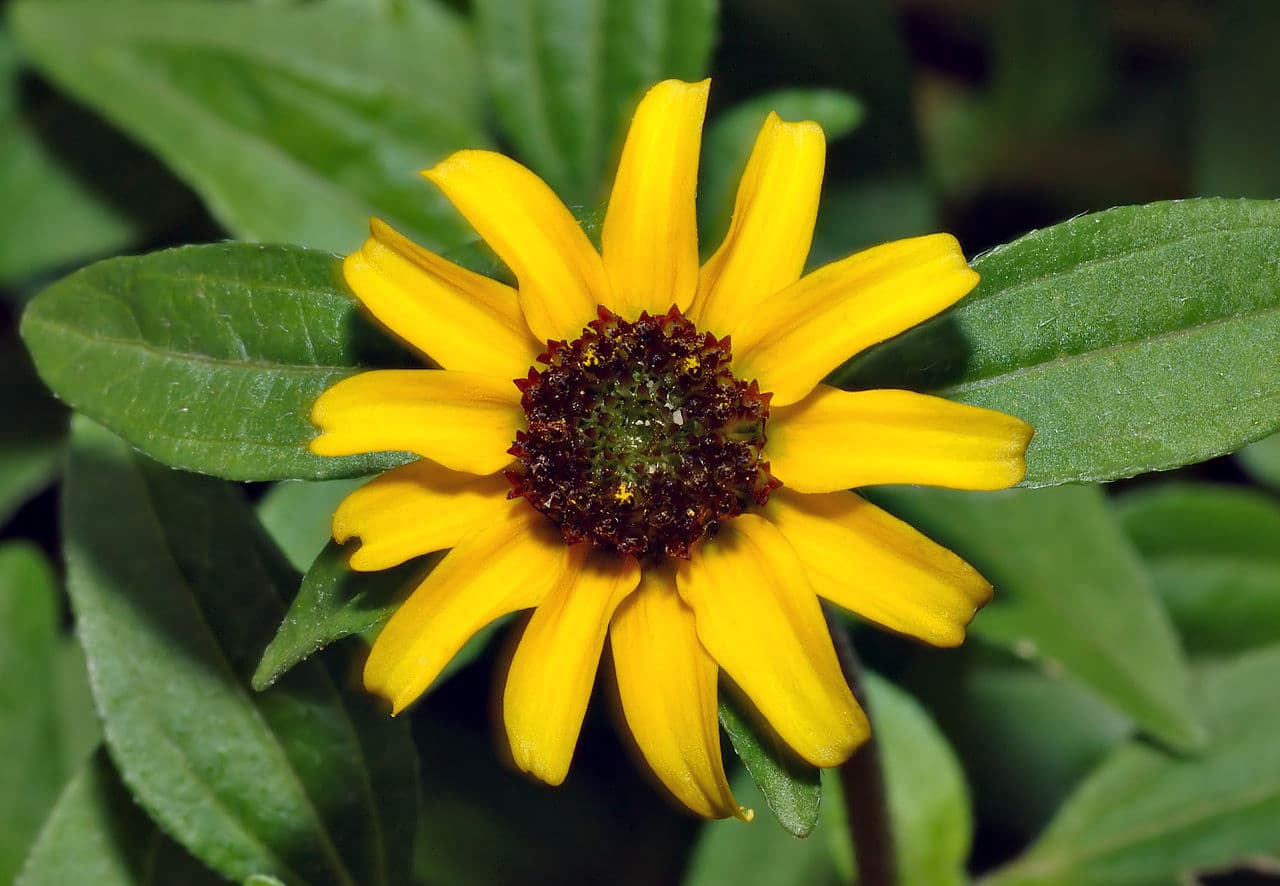
Image – Wikimedia / André Karwath aka Aka
There are plants that can easily brighten our day just by looking out onto the balcony or going out for coffee on the patio or terrace. There are orange, red, white, …; some higher than others. On this occasion, we are going to talk to you about one that has a less curious name: rooster eye.
It is a little plant related to the sunflower (Helianthus annuus) and like him, produces flowers with striking yellow petals.
Origin and characteristics of the rooster’s eye

Image – Wikimedia / Karelj
Our protagonist is a plant native to Mexico, and from Guatemala to Costa Rica, whose scientific name is sanvitalia prostratealthough it is better known by the common names eye of the gallo, eye of chicken, eye of parakeet, vaquita, sanguinaria, grass of chicken or grass of the toad. It grows naturally in bushes, pine and holm oak forests, and in low deciduous forests.
It is a creeping herb with an annual cycle that reaches a maximum height of 20 centimeters and a diameter of up to 80 centimeters.. The leaves are opposite, simple, and petiolate, green in color. It blooms during the summer, producing yellow or orange flowers, with a brown center.
What are their cares?
If you want to have a copy, we recommend that you provide it with the following care:
Location
Gallo’s eye is a plant that can be had in rockeries, planters and of course also in pots, but always outside, in an area where it is directly exposed to sunlight for the whole day.
In situations with low light, its flowering can be either scarce or non-existent, hence it is not advisable to have it inside the house.
Earth
So that the roots and therefore the plant do not rot, it is very important that the soil, both in the garden and in the flowerpot or planter, is able to absorb and filter the water quickly. Keep in mind that excess watering or humidity can cause significant damage, therefore, we recommend the following:
- Flowerpot / Planter: fill it with universal growing medium mixed with equal parts perlite. To further improve drainage, you can even put a first layer about 2-3cm thick of volcanic clay or quartz sand for example.
- the garden: being a small plant, you can make a planting hole of about 40 x 40cm, and fill it with the mixture of substrates mentioned before.
Another option is to plant it in the hole with the pot. This is especially recommended when the available space in the garden is quite limited, since keeping it in the container better controls its growth.
Irrigation

Image – Wikimedia / Karelj
The rooster’s eye resists drought wellDue to this, it must be watered 2-3 times a week in summer, and somewhat less the rest of the year.
If you have it in a pot or planter, do not put a plate under it unless you always remember to remove any excess water 20-30 minutes after watering.
Subscriber
From early spring to after flowering in summer It is highly recommended to fertilize it with a fertilizer for flower plants, or if you prefer with a natural one such as guano. In any case, you must follow the instructions specified on the product packaging to avoid the risk of overdose.
Multiplication
Multiply by seeds in late winter or spring. To do this, proceed as follows:
- First, you have to choose a hotbed. This can be a pot -with holes-, a seedling tray (horticultural or forestry), peat tablets, clean milk or yogurt containers with a small hole in the base,… or anything that is waterproof.
- Afterwards, it is filled if necessary with substrate for seedlings or with universal substrate mixed with perlite in equal parts.
- Then, it is watered consciously.
- Afterwards, the seeds are placed on the surface of the substrate, ensuring that they are as far apart from each other as possible.
- They are then covered with a thin layer of substrate.
- Finally, the seedbed is placed outside, in full sun.
If all goes well, they will germinate in about 10 days or so.
Pruning
By having a creeping habit it may be the case that its stems grow more than what was initially expected. If that happens, don’t worry: take a pair of scissors, wash them with soap and water, and cut without fear.
Rusticity
Its life cycle is annual, that is, it germinates, grows, blooms, produces seeds and finally dries in a year. Furthermore, due to its origin, it is sensitive to frostSo if, for example, the area where it is grown, the temperatures begin to drop below 0 degrees already in autumn, it is possible that it will wither sooner.

Image – Wikimedia / André Karwath aka Aka
What did you think of this plant? Did you know her?

